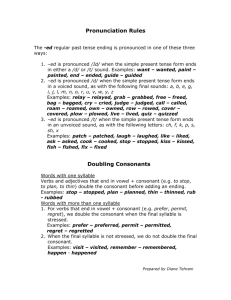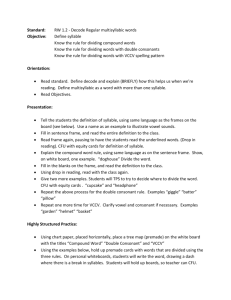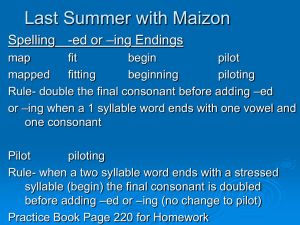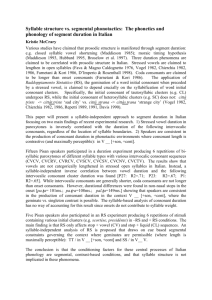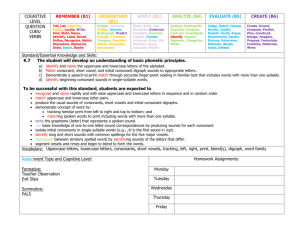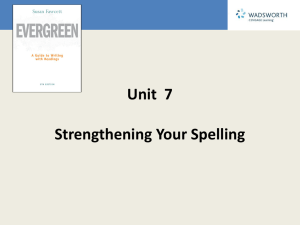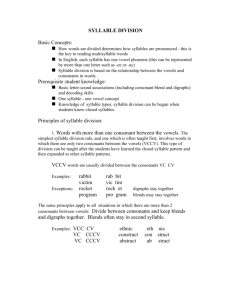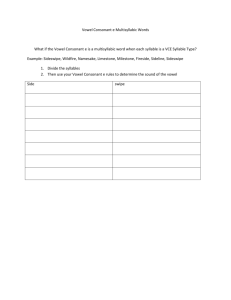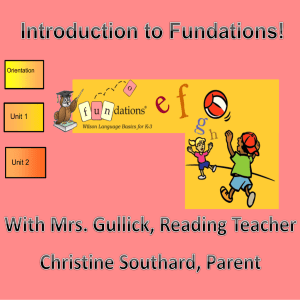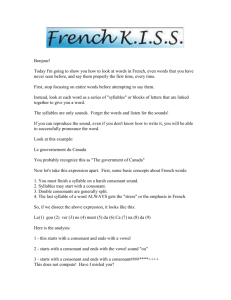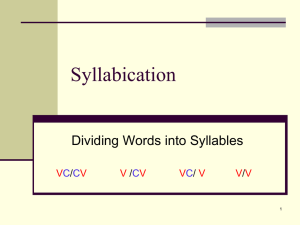Syllable
advertisement
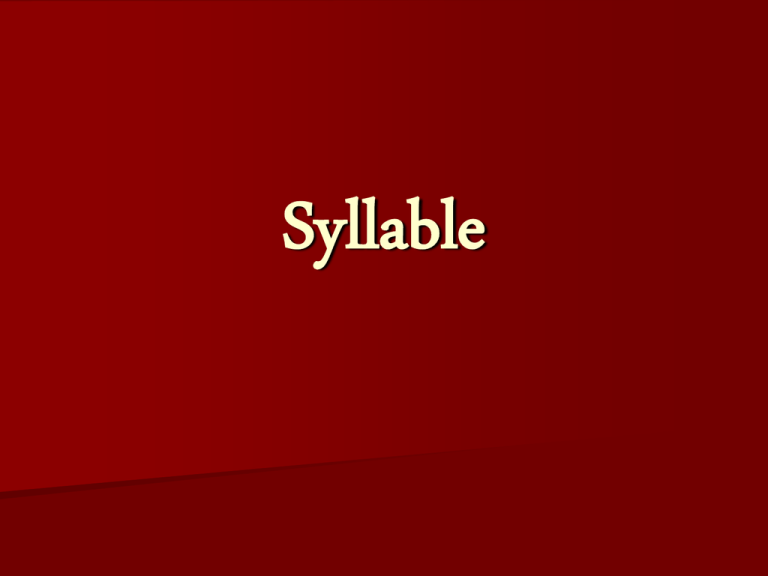
Syllable Syllable When talking about stress, we refer to the degree of force and loudness with which a syllable is uttered. A syllable is a pronunciation unit usually larger than a single sound but smaller than a word --- in most cases a syllable contains more than one sound, and a word consists of more than one syllable. O monosyllabic words O. / .O dissyllabic words O.. / .O. trisyllabic words A stressed syllable is perceived longer in duration and higher in pitch. Consonant Cluster 辅音连缀 Consonant cluster refers to the cases where two, three or four or even more consonants follow one after the other (with no vowels in between). CCCVCCCC Pattern C stands for consonant. V stands for vowel. In English, it is quite likely that we find three consonants before a vowel or four consonants after a vowel within a syllable. A syllable is a word part and the basic unit of English rhythm. It is a pronunciation usually larger than a single sound but smaller than a word. e.g. see /si:/ seed /si:d/ speed /spi:d/ spread /spred/ sweet /swi:t/ swept /swept/ mixed /mikst/ texts /teksts/ Consonant Sequence 辅音系列 In phrases, one word may end with a consonant (or more) and the next word may begin with one (or more), so that longer sequences quite commonly occurs. This sequence of consonants in between words is called consonant sequence. CCCVCCCC + CCCVCCCC We have at most 7 consonants between two vowels in the phrase. e.g. all over the country fix this axe for us The text’s stupid. all over the country fix this axe for us The text’s stupid. Note: The glide from one (consonant) to another is quite smooth, with no gap or hesitation or vowel in between. Individual sounds may not be necessarily pronounced equally clear and distinctive. There forms a natural flow of sounds. Both consonant cluster and consonant sequence concern only the phonetic symbols, not the transcription of the speech sounds.

